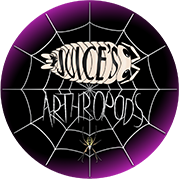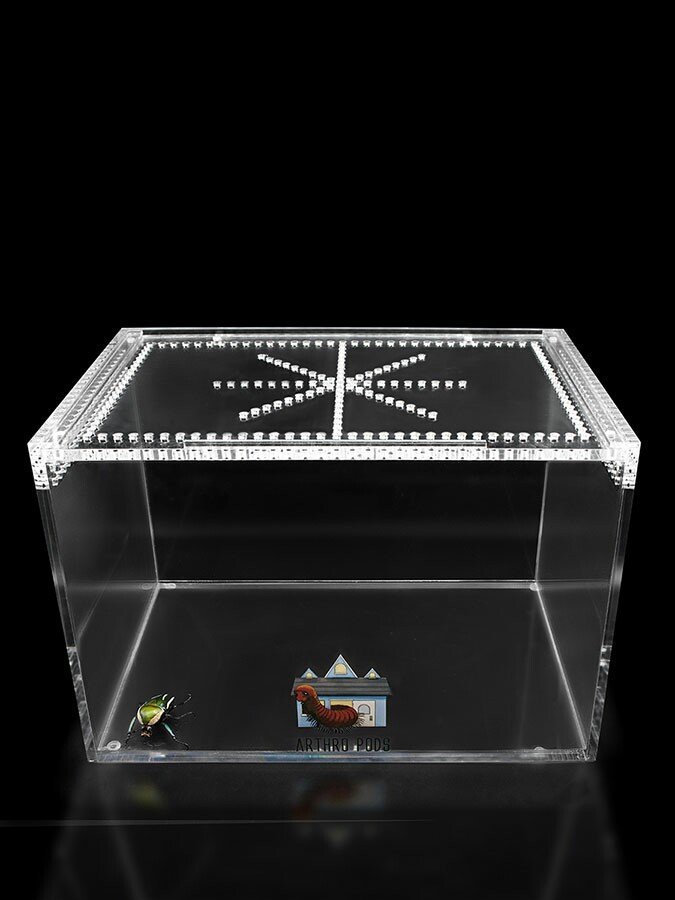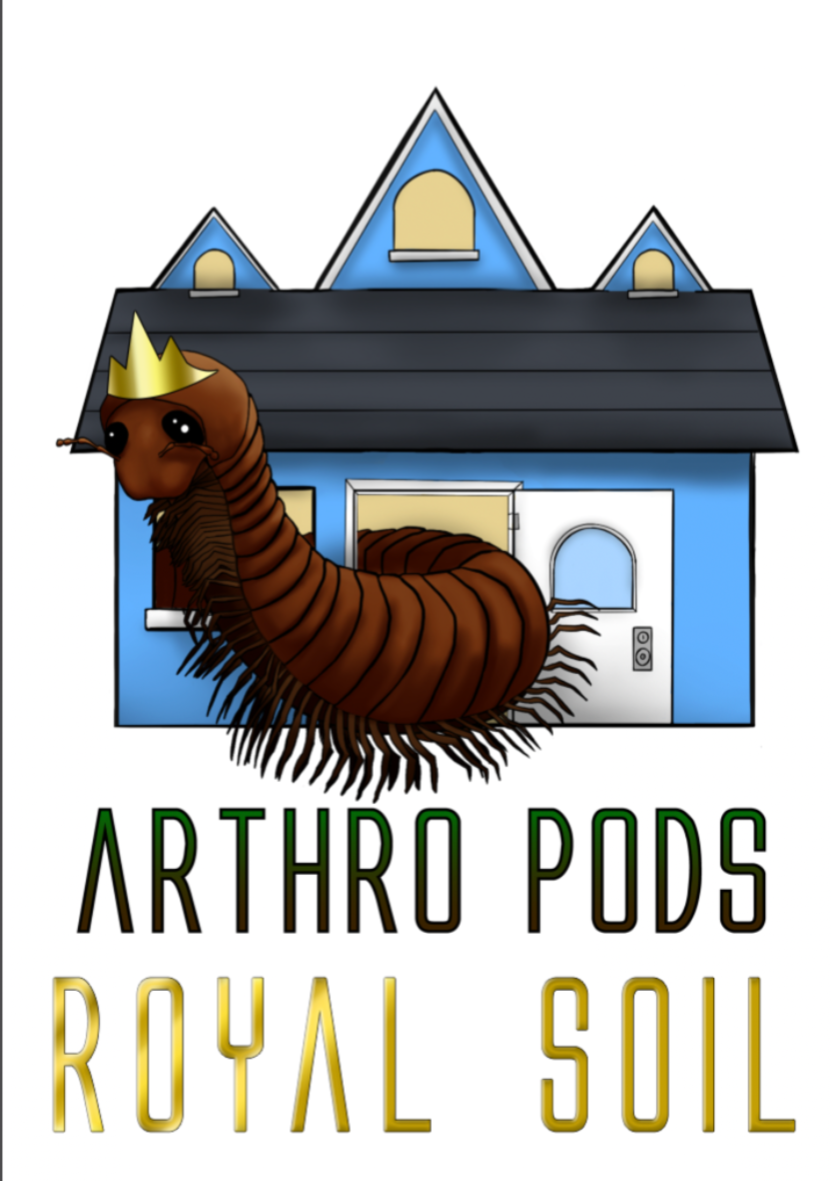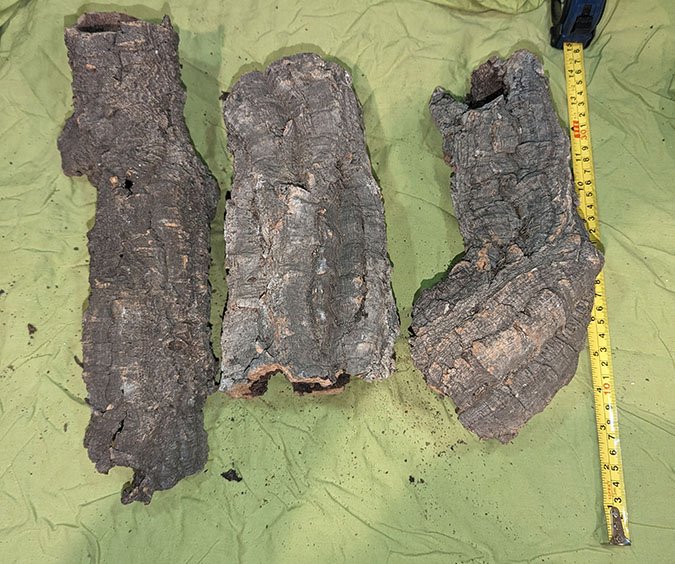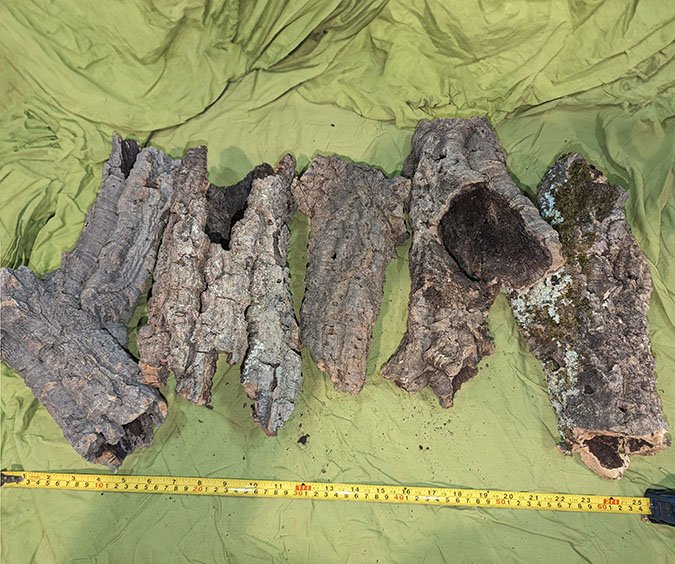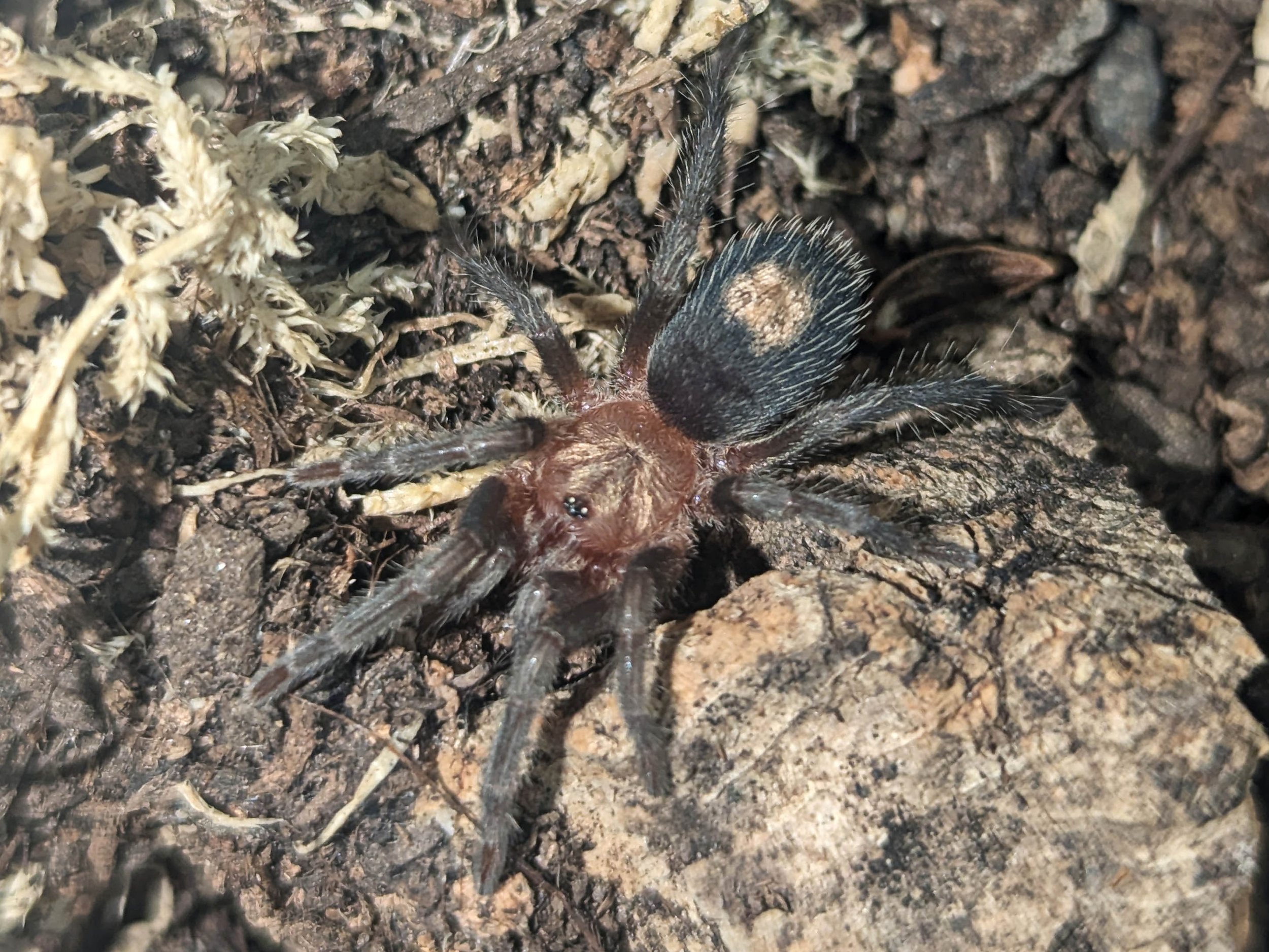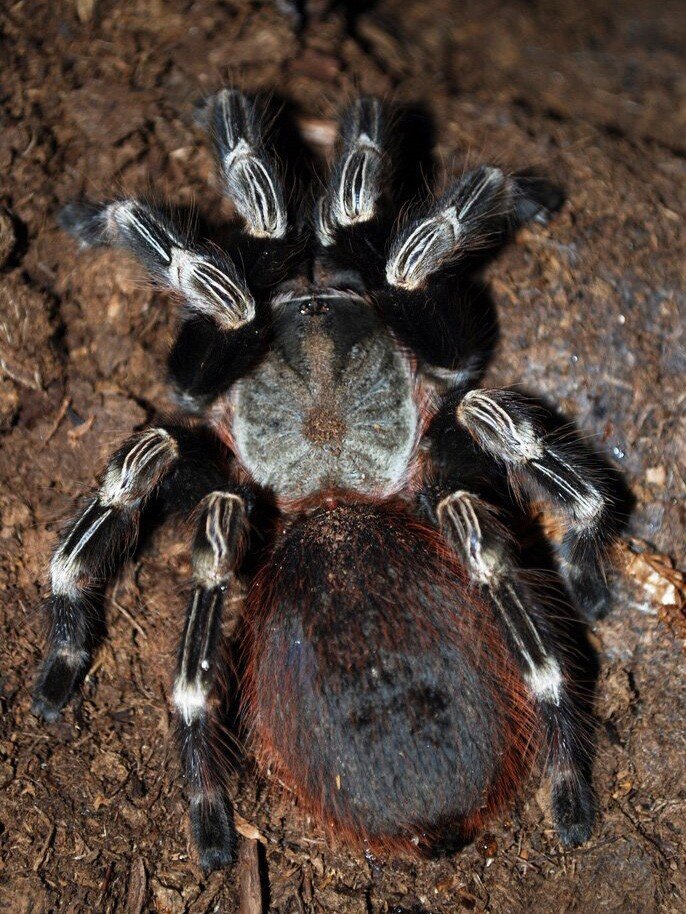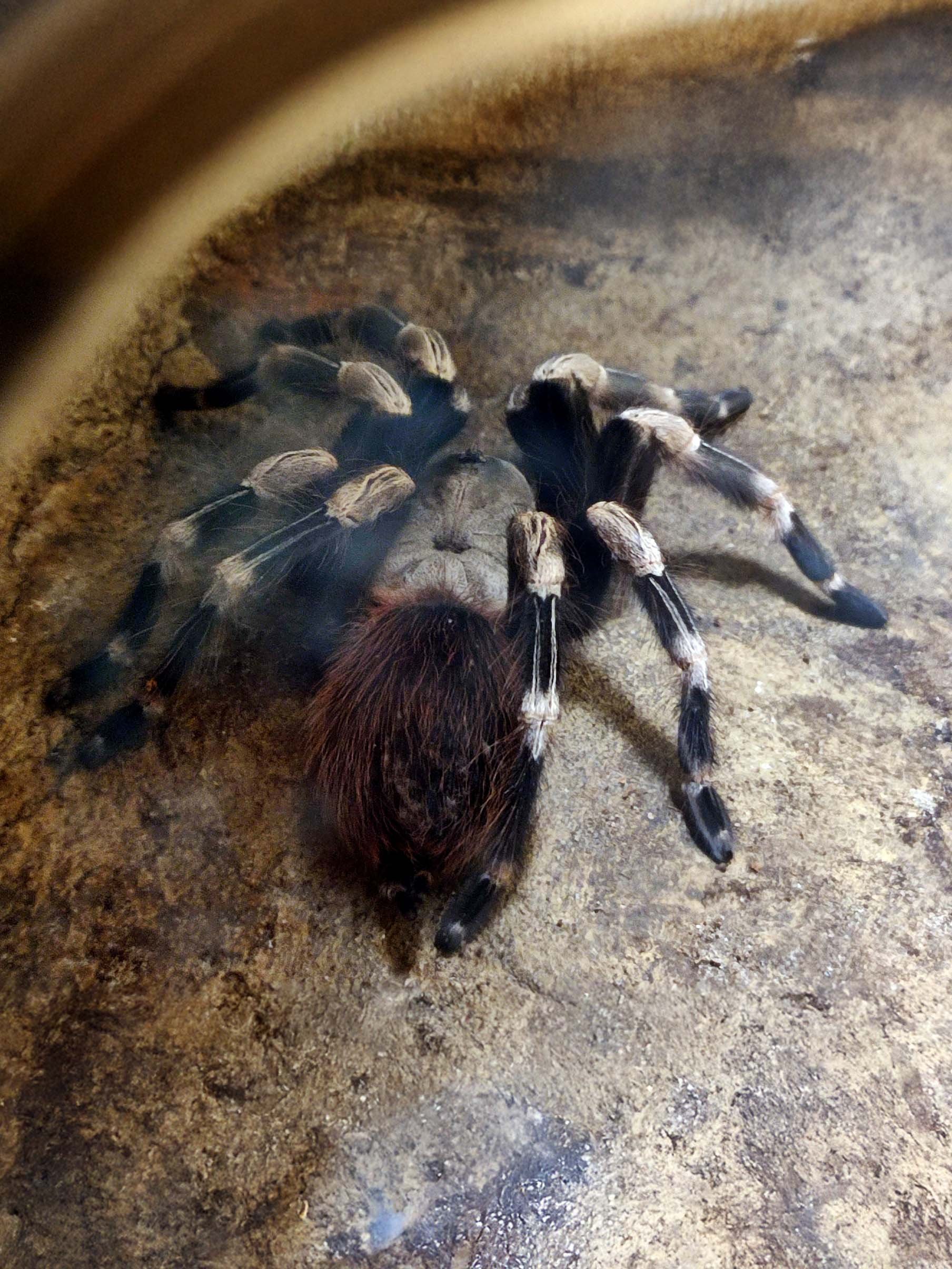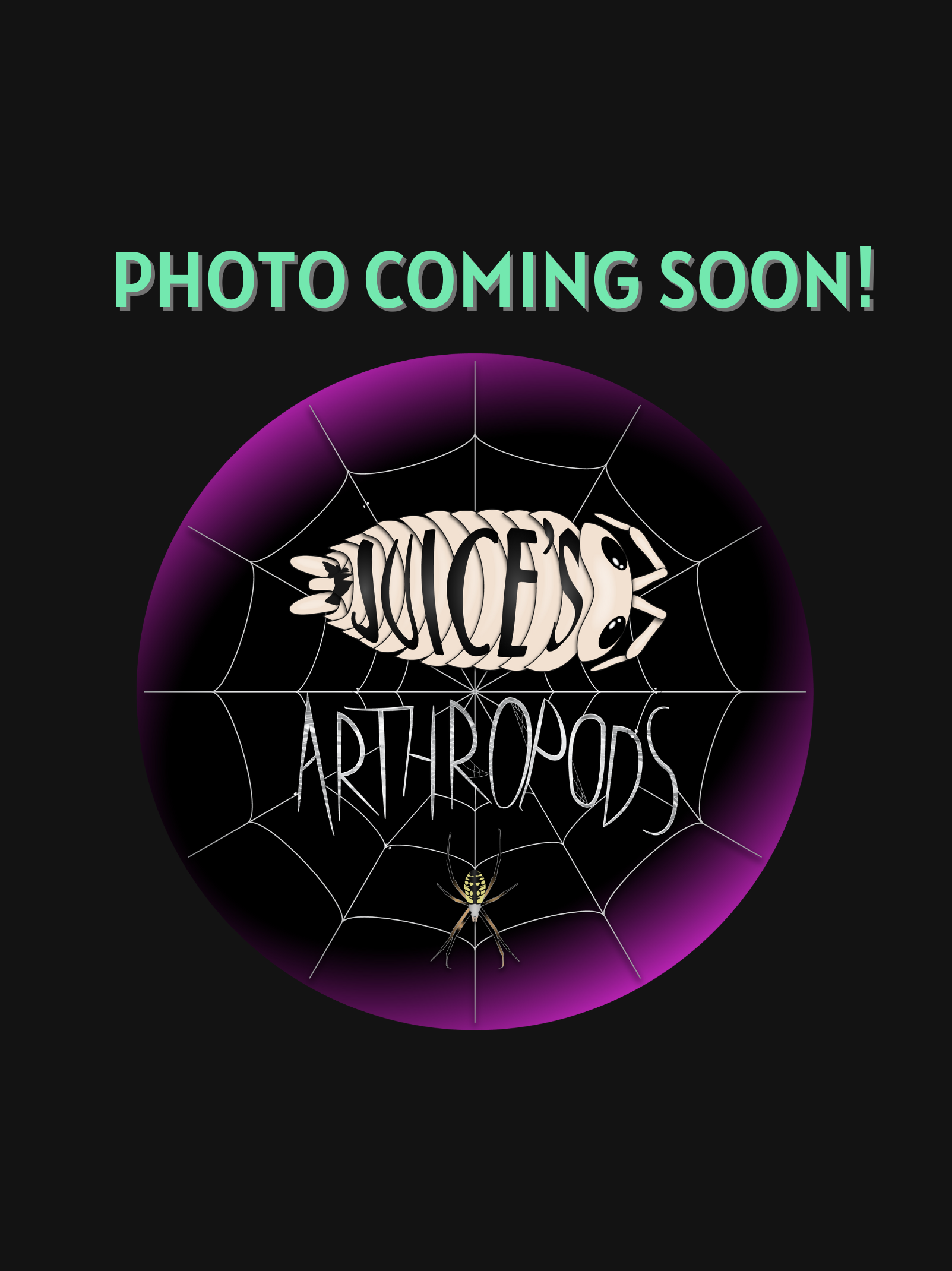 Image 1 of
Image 1 of


Phormictopus sp. "Full Green"
The Phormictopus sp. "Full Green," commonly known as the Full Green Tarantula, is a stunning species celebrated for its vibrant metallic green coloration that shimmers beautifully under light. The “Full Green” moniker is meant to describe that not only does its carapace get the beautiful emerald sheen, but so do its legs. With a large leg span of up to 8 inches, this species is imposing and visually captivating, making it a standout choice for enthusiasts. Known for its rapid growth and bold presence, it is a fascinating tarantula to observe in naturalistic enclosures. Its striking appearance and impressive size make it a highly sought-after addition for collectors looking to showcase a truly unique and eye-catching tarantula.
The Phormictopus sp. "Full Green," commonly known as the Full Green Tarantula, is a stunning species celebrated for its vibrant metallic green coloration that shimmers beautifully under light. The “Full Green” moniker is meant to describe that not only does its carapace get the beautiful emerald sheen, but so do its legs. With a large leg span of up to 8 inches, this species is imposing and visually captivating, making it a standout choice for enthusiasts. Known for its rapid growth and bold presence, it is a fascinating tarantula to observe in naturalistic enclosures. Its striking appearance and impressive size make it a highly sought-after addition for collectors looking to showcase a truly unique and eye-catching tarantula.
The Phormictopus sp. "Full Green," commonly known as the Full Green Tarantula, is a stunning species celebrated for its vibrant metallic green coloration that shimmers beautifully under light. The “Full Green” moniker is meant to describe that not only does its carapace get the beautiful emerald sheen, but so do its legs. With a large leg span of up to 8 inches, this species is imposing and visually captivating, making it a standout choice for enthusiasts. Known for its rapid growth and bold presence, it is a fascinating tarantula to observe in naturalistic enclosures. Its striking appearance and impressive size make it a highly sought-after addition for collectors looking to showcase a truly unique and eye-catching tarantula.
What's the ideal diet for a Full Green Tarantula?
All Tarantulas can eat a variety of feeders. Stick to crickets, dubia roaches, silkworms, horned worms occasionally, and a superworm or mealworm as the occasional treat!
How should I keep a Full Green Tarantula?
For this particular creature, you can start with the Terrestrial Terrain small enclosure if under a ¼in -1.2in Spiderling (sling), and when they get to be about 1in the size, you will want to either go to the Terrestrial Terrain Medium, or Terrestrial Terrain Large enclosure. Feed them as slings once a week, twice if their opisthosoma (abdomen) looks small, but if the opisthosoma is wider than their prosoma (pneumothorax) then wait a couple of days to feed. For juveniles or adults, stick to feeding once a week, nothing larger than their opisthosoma. Make sure to keep a water dish at all times full, wider and deeper is preferred.
How long could a Full Green Tarantula live?
Females are believed to live upwards of 15+ years in captivity, and even males can live upwards of 2-5 years of age. All estimates are based on multiple sources.
